Digos To Davao City Bus Ride
After my Digos City Tour, I hopped on a bus to Davao City. This is a short trip of about an hour, so I am guessing, it's probably only 50 kilometers or so. But the views are worth remembering for us travelers.
Lucky day! This air-conditioned bus I hopped-on-to was new, and noticeably quite clean than others.Let's not talk about the TV monitors since that's common among Philippine buses, right? Not even the curtain at right edge of the photo which is the 2nd door (the 1st one is up front) - also common, right?
But look at those two backpacks below the TV monitor at right. If you are not familiar, they are resting atop the ceiling of the bus toilet. Yes, that is not (yet) common in Visayas and Mindanao, even if some buses from Metro Manila to Ilocos already had them years ago (i.e., Maria De Leon to Laoag in 2008)!
I actually asked silently "why this kind of bus on a mere 50km trip"? But I realized, this bus could have originated from the far west, like Tacurong and Koronadal, or even Cotabato City, on the way to Davao.
Look also at those handles/handrails (whatever they are called) behind each backrest. Behind each of the little hooks in the middle, is a live USB Charging Port. Yes alive, so I was able to charge my phone!
Oh, to my friends who've not even been to Mindanao but have prejudices, the "scenes" can be like this:There may be Muslims who are "balot-na-balot' in their attires but, 'di lang sa Pasay me pekpek shorts!
Let's go!
While exiting Digos' main commercial area, our bus slowed down (traffic?) and I saw this...Not that that 'foodhaus' has any touristic significance. It says 'seafoods & grill' which is common, but I took that pic anyway, to remind myself of the roadside signboards (left edge of picture). That leftmost signage says "Hito ug Bulalo Diri" which confirms my earlier observation that 'hito' (catfish) and bulalo are a hit in this city (if not this province). I know aquaculture is big in this region, so maybe cattle too?
But I also know that Bulacan is still the biggest producer of "hito", and Central/Northern Luzon are the biggest consumers of that whiskered fish! Has Mindanao already acquired a taste for freshwater fish? Ah maybe so, since the 'fruits' of the sea is slowly decreasing. As for the "bulalo", it's a fave anywhere!
Hey, that second signboard (still in the same picture above) says something that is new to me. It says "We have ●Eat All You Can ●Per serve". Does the 2nd bullet point mean "à la carte"? I actually think so.
Okay sige, let's move forward!
By the way, on the left side of the road, I saw signages pointing directions to at least two monasteries, each named after a (catholic) saint. Therefore they would be catholic monasteries, right? Why is that? I pondered if Digos has a miraculous anything. Wala yata. Ah, probably because it's a 'diocese center'!
Another notable note: There are so many gasoline stations in and out of the city. Bakit kaya?
Anyway, in just about 10 minutes of travel, we already reached the northern-most tip of Digos City.Yes, Sta. Cruz, the northernmost town of Davao Del Sur province - meaning right next to Davao City.
Double luck! If I earlier said I was lucky to have boarded this new and clean bus, I was lucky too that, a lady who sat next to me was so talkative hahaha! Without me asking she annotated the entire trip. Da!
Her mouth may have been triggered (to my absolute delight) when she saw me taking pictures of just about anything we were passing by. I recall, our conversation started with her asking "are you tourist? Japanese? Korean? Chinese? Singaporean?". We both laughed when I said "bisdak, taga-Mandaue ra"!
She then asked why I was taking pictures of 'just about anything'. Instead of telling her I am a blogger, which (I thought) might have been more difficult to explain to a senior, I said I like traveling and taking pictures of every place I visit. But I was awestruck when she said "aw, you should become a vlogger".
All I could wickedly but silently say was "nge! updated pala ang matandang ito, pahiya ako"! Note, she said that in English and the "v" in vlogger was clear. She didn't even mean "blogger" that is old like me!
Anywayy, since she saw me take a photo of that 'Welcome to Sta. Cruz' signboard, her tongue was on fire hahaha! And I could not thank her ever enough, because I have never even heard about this town!
She told me this is the oldest town of Davao Del Sur. The place we were zooming-by, Barangay Bato, is the southernmost part of Sta. Cruz; there is a road beside their barangay hall and pedestrian overpass that leads to the shore that is the jump-off point to Passig Islet; she said take note it is "double S", and the islet has white sand; all of it is just one resort and eco-park, owned by their provincial government.
Oh my gee! I had to frantically take notes. She talked so lightning fast!
I also learned from her that Sta. Cruz being a suburb sandwiched between Davao City on its north and Digos City on its south, also wants to become a city, and that it had signified the intention since 2013.
This town supplies fish to Davao and Digos, but they also have seaweeds and aquaculture farms. Yet, its main products are still coconuts, babanas and sugarcane. Giant firms like San Miguel are here too.
I asked why she knew all these, and she told me she was a university professor (now retired). Da!
We passed by the Sta. Cruz Integrated Bus Terminal more popularly called Overland Terminal...
But no one got off or came aboard our bus, so we just went straight ahead though a bit slow...
And after a gas station, "next door" is the town's public market (not a barter trade area, I suppose)!My seatmate went "temporarily" silent and was back to her rosary beads, murmuring (whispering) her prayers. I had some questions at about this time, but I did not dare bother her hehehe! 3 o'clock habit!
But no sooner, she was happily back to 'annotating' my tour!
She saw me take a pic of this sari-sari store, while I audibly said "Labor Store" [en English]But she lightly tapped my wrist and said it is not pronounced "labor" as in "laborers" or "labor union". It is a surname, probably of the store owner. I nodded, since I understood what she was trying to tell me. Therefore, in that 'labor' (as surname), we pronounce the 1st syllable as we would say in "la la la la la".
I took this picture and asked the dear lady why all the masjids I see in these areas are rather too small.She gladly educated me, that in this province of Davao Del Sur, 75% are Catholics, 7% are Evangelicals (whatever that means! yun ba ang protestant?), and Islam is only 4% and scattered, so they don't need big masjids. Engrossed si lola! She even still added more info saying "ang Iglesia 2% lang...", etc.. etc.!
I noticed too, that most of the highway was now along the seashores, and at sea level...My dear 'lola tour guide' told me that this area of Sta. Cruz has many beach resorts on brown sand.
While telling me about the coast, she pointed at a place telling me that's one of the best in Sta. Cruz.I quickly aimed my phone and snapped, but the bus was running fast, that was all I could catch heheh! Anyway, she told me the name is Dolly's House of Seafoods, though it serves everything - except pork.
I took the chance to ask if she knows, why some restaurants in this province do not serve pork, even if there are few Muslims. She informed me that there are lots of Muslims who go to Davao City from the Muslim-populated areas of Cotabato and Maguindanao. They pass this way, and they need to eat too!
I loved this conversation! I learned many important insights, not only about the places and the people, but also about economic quirks! Oo nga naman, ano? If there's pork they won't enter, saan sila kakain?
So, captured market na agad, which, doesn't really drive away the non-Muslims, because seafoods are everyone's favorite! It does not have to be "halal". As we said earlier, if there is no halal food, their next best option is a "no pork" place. Eh, ganun din kayong mga pa-health-conscious, diba? No "oink-oink"!
A bit onwards, we passed by an industrial district of town. Too many cargo trucks everywhere...
Many of these were maneuvering into or out of the sides of the highway, that traffic had to slow down.
My curiosity was perked by realizing that all trucks had the same kind of cargo - dehusked coconuts.
What we mostly see being transported are full (light-green colored) coconuts still with husk to be sold as buko, right? Otherwise, we'd see copra - the already dried/sliced pieces of the coconut meat, di ba?
In any case, what we usually see are not fleets (yes plural) of trucks, lining/crowding a highway, right?
And these are really big trucks. As I kept taking pictures, my seatmate said "Franklin Baker yan"...We laughed, because I thought she meant that that manong in red is named "Franklin Baker" heheheh! She explained that Franklin Baker is one of the biggest coconut processing companies in the world. It is a US Company since 1800s, started in Sta Mesa by 1920s, then San Pablo, and here in 1968. Woah!
After that vast WL Foods Plant, I saw what looks like a shrimp/crab farm, also vast...I have learned to identify them due to my travels - the paddies are lined with plastic (canvas) sheets.
Eto pa... as if "vastness" is the name of the game, this Seaoil Depo (bulk terminal) is also vast!I think that side by the highway can be half a kilometer! Well, bulk depos are meant to be huge, right?
There were other big industries like an LPG Farm, banana plantations, hydropower plants, then this...From what those youngsters were wearing (they were all wet) and the sight of that tire interior (rubber tube), I knew there must be something fun around here. Ah yes the dear ex-professor told me about it!
This is the Sibulan Bridge, over Sibulan River, in Brgy. Sibulan, Sta. Cruz, Davao Del Sur...By a quick glance at the picture, you will probably recognize that there's a new concrete embankment. The ex-professor says it had to be replaced (both sides) since the river just ruins it during rain season.
A thing to note for you adventurers. Why? Becuase that is where the Sibulan River Tubing happens! If you zoom that photo above, you can even see the lively activities happening. Here it is with my marks:The two white arrows near the bridge, point to people swimming on the clear and clean river. The two yellow arrows point to people carrying rubber tubes, walking upriver. One (in a light-blue shirt) seem to have just started to float going downstream. Red arrows point to folks having a picnic. Blue, si bantay!
Here's another shot, while my bus was in the middle of the bridge, camera facing downstream.That river emanates from the famous Mt. Apo, the highest peak in the Philippines. Plus, she informed me too, that the original 1880 hiking trail, used in the very first conquest of that mountain's summit, is still existent and very much in use by tourists, scientists or enthusiasts. Where? Here in Brgy. Sibulan.
Not even 500 meters from that Sibulan river and bridge, we passed by another industrial "township"! From logos by the roadside alone, there was no mistaking we were by Cocal-Cola Bottling Plant and a San Miguel Brewery. But, the dear old lady also told me, that behind those structures we see along the road, are more farms and structures like BMEG, San Miguel Foods, Magnolia Chicken Dressing Plant!
Those vast industrial establishments (above) were on the right side of the bus - my window side. But, I wasn't able to take pics, across them, I could see on my peripheral vision, so many trucks lined up on the roadside too! Another Franklin Baker facility, just across Coke & SMB. Wow, another industrial site!
This town must be rich in taxes alone. No wonder, they wanted to become a city.
At least the industries are not contiguous. There are still small family farms, residences and even this:Actually, I wasn't really sure if that is a masjid, or just a muslim residence that wanted to erect it. I was imagining, just like some catholic residences that have grottos or chapels in their front yards. It's cute!
Okay, I knew we were entering Davao City when I started seeing so many signages by the road sides. Can you read the yellow signboard in the middle of the picture, and do you know what that means?
Here are more pictures, for you to deduce or decipher what this means hehehe... Yep checkpoints. Signboards say Task Force Davao, drivers, conductors and my lady seatmate call it Task Force Sirawan. Whatever, that is a military checkpoint at Brgy. Sirawan, Toril District, Davao City.
If you observe the distance of my bus from those canopies (tents), we were not really going to any of them, right? Yes we weren't. Those are only for small vehicles w/ few people in them, and motorbikes.
We were headed a bit farther onwards, for the bigger tents where busloads are searched/inspected!Haha! So you thought we were exempted? No way! But at least, these military people (all carrying long firearms) made this checkpoint more humane than you'll undergo elsewhere, if that's any consolation!
Can you see the many stores? Good! Because the snacks and drinks are a welcome diversion for your irritated (or frightened) mind, as this takes time. It's a long inspection line, especially if your bus is full.
Ah okay.., for those who haven't experienced this yet (really now?), let me describe the process!
01. This checkpoint is on a stretch of about a hundred meters or so. Not just a gate or barrier.
02. Your vehicle will be directed by military personnel up front, as to which inspection area to go.
03. Motorbikes or tricycles are at times searched/inspected at the checkpoint itself to make it faster.
04. Once parked, a military guy boards your bus, asking everyone to disembark. Heed, don't faint!
05. PWD and seniors may remain on board. Note: Only the immobile ones, not the deaf or mute!
06. Pregnant are on a case to case basis. Eh kung manganganak ka na, ba't ka nasa bus?
07. Women with children, you also go down. Paano ka nga naman sumakay if you can't go down?
08. Other officers start search/inspection, sometimes with dogs, even while you're still piling out.
09. All you who disembark must bring ALL your belongings with you (for your own good din yan)!
10. Once on the pavement, join the inspection line (PWD/seniors/preggy/kids are priority).
11. Not all are frisked, they decide on that. Kung gusto mo magpahipo, aba di magpresenta ka!
12. Be prepared to open and/or empty your bags on the inspection table per their order.
13. When done, wait for conductor or driver's boarding signal - they get that from the officers.
14. When not yet being re-boarded, you can browse the little stores for snacks/drinks.
15. Well, don't be surprised you might see non-edible souvenirs on sale too! GoRa!
16. There are comfort rooms if nature calls. They could be far from your bus, but yes, there are!
Well, my bus had its own toilet, I guess none of my busmates needed to visit those on ground.
Here's a picture of my bus after some of us were done with the inspection, waiting for boarding.Important note: the two pictures above are all that I got "at" the actual inspection area. Why? Because the lola told me to stop shooting. I did not hear those men say anything about pictures or videos, but I heeded the lola's advise anyway. Eh mga sundalo yan, they are best with their ratatatatat than arguing!
Sabi nga ni Mano Toto, baka mga "happy trigger" [trigger-happy] yan! Kulba!
Anyway, on the lighter side, I had to take this photo (they're not exempted from the checkpoint)...Why did I need to note this? Ah, my dear lola seatmate told me, those are called "payong-payong". Not the ones I mentioned in an article I wrote almost a decade ago. These are not anymore just pedicabs!
And I now have a new name to remember: payong-payong!
Look here look! I caught a photo of a regular tricycle and the payong-payong as we overtook them!Wohoo! We reached Davao City - but although however subalit.. you very well know, this was still more than 20, probably even 30kms to the city's Overland Bus Terminal called Ecoland, where this trip ends!
Yes yes, let's just say that again, as mentioned in one of my stories of long ago.., that in terms of land area, Davao is the biggest city in the country, which my favorite tourguide in Puerto Princesa disputes!
Ah bahala sila mag-hisgot! Basta...
I know I'm in Toril when I see this road intersection with this iconic Durian Monument! It's a memorable landmark to me (and probably some folks in my "age bracket"). Why? Ah, correct me if I'm wrong, but I think, when I was young and had no sense, it was just a kalabaw there, nothing else!
Here's another payong-payong with two jolly youngsters signalling I take their picture hahaha!They saw me taking pictures of the monument and Gaisano Grand Mall, then they started waving their hands at me, to get my attention, signalling that I also take their photo, by making various poses. Aliw!
Hey, similar to Digos - just about 400 meters from Gaisano Grand Mall, there's also a Gaisano G-Mall!Now I'm starting to wonder, is it a 1] crowd-drawing strategy for their respective malls' mutual benefit? or 2] are the original Gaisano brothers and/or their children trying to 'kill' each others' Gaisano brands?
I have a feeling it is item 1] above. Whadya think my fellow atrevida travelers? Aren't you as curious as I am? If it is really a strategy, it must be good to know-more, about how it works and its efficacy, di ba?
Anyway, I have finally arrived in Davao City, and most of my notes about what the bus was passing by, were more on business-related snippets and/or trivia than "about travel" hahaha! So, let me skip them.
Then we reached SM City. Some passengers got off here, but I chose to go all the way to Ecoland. I could have gotten off here too, since I would take a taxi to my hotel anyway. But I decided to stay on, if only to experience the full length of the bus ride, from departure in Digos, to arrival in Davao. Ganun!
After SM, the bus goes on for about 2kms (or less?) to its actual terminal station (Ecoland).But why do I have a picture of that school again? Well, at that corner near a gas station where Quimpo Boulevard curves to the left, that's the most prominent sight, so I took a picture of it. Maganda sya eh!
Ah on this one, we were actually at the very corner as the bus was turning left on Quimpo Boulevard...I'll be honest, I anticipated too much here. I knew the bus would zoom at full speed on green light, that I might not be able to take a shot that I wanted (of the Quimpo Monument). I clicked too early hahaha!
That's the left edge of the photo, and only the pedestal is visible!
Anyway, he is Romualdo Cauilan Quimpo, the lawyer ex-governor who filed "Commonwealth Act 51 or An Act Creating the City of Davao" when he was assemblyman. Not many people, even young and old true-blue Davaoeños (some are my friends), can still remember him. He caused Davao to become city.
His political life was "masalimuot" as it was full of intrigues. Aha, my 日本の読者の皆さん and JaPino friends will probably want to dig more about him, or that era in Davao's historical past. During that era, politicians ruined their opponents by accusing them as "collaborators" (of the Japanese government)!
Anyway again.., before I got off the bus I took this picture to remember the time, 3:43PM...We pushed back from Digos City at 2:23PM (that's the xml time code of the second picture above). So therefore, it took this bus ride, exactly 1 hour & 20 minutes to Davao City, inclusive of checkpoints etc.
Hey, as usual, like before, no pictures after getting off the bus.
More of this sojourn in my next stories!



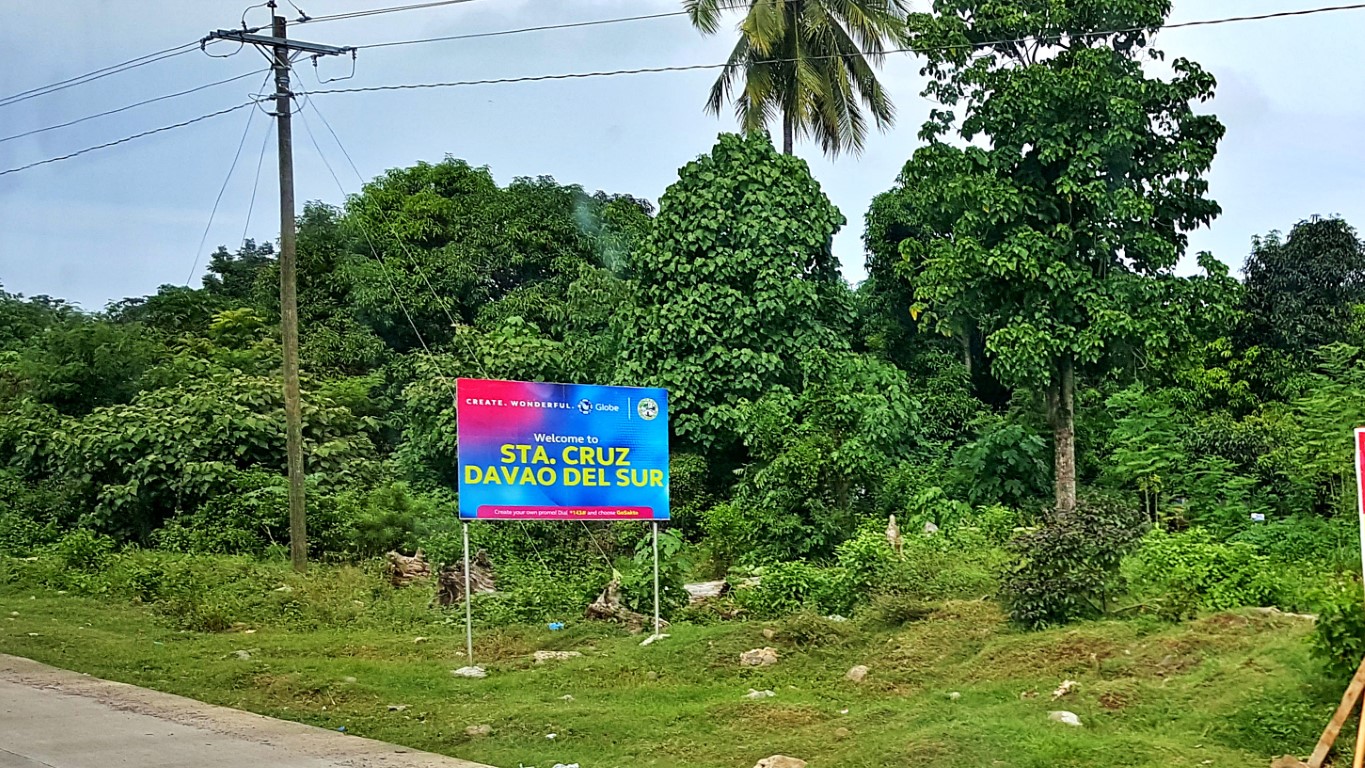


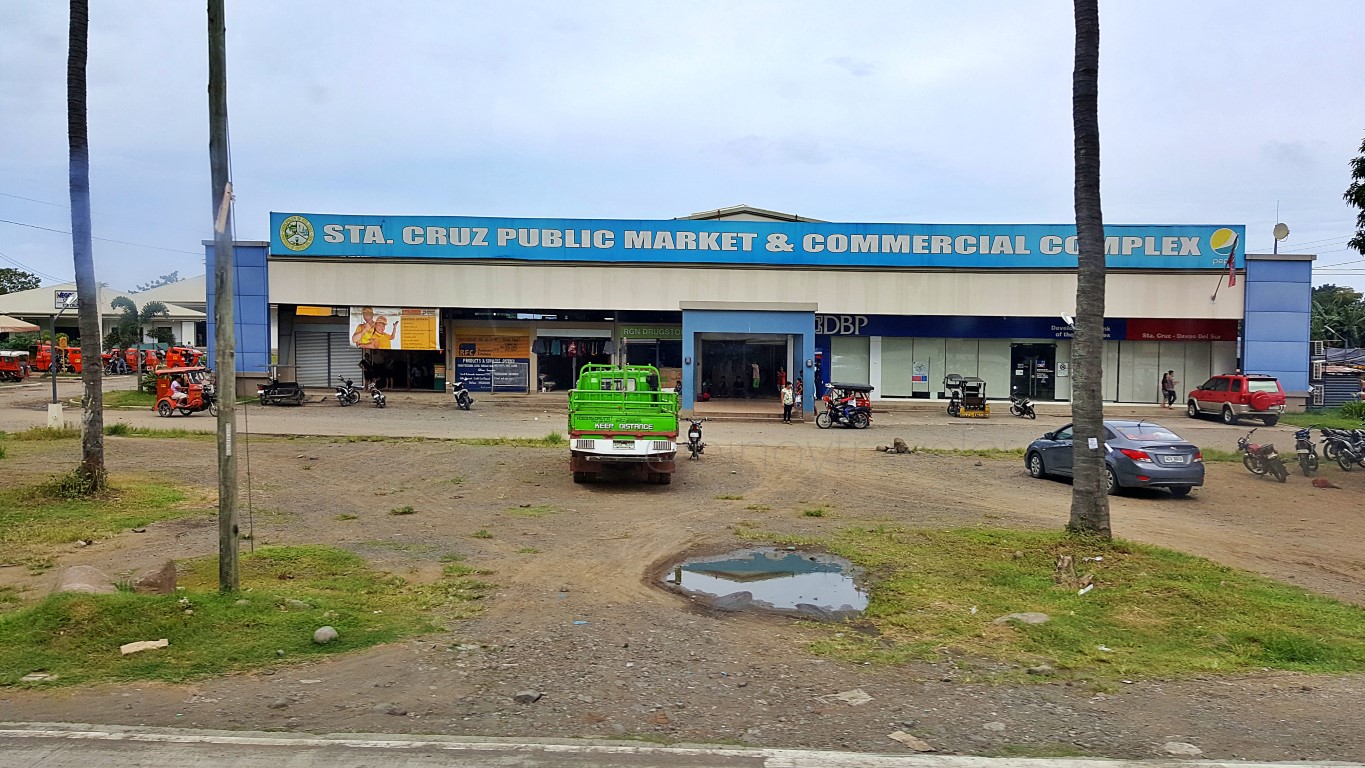






















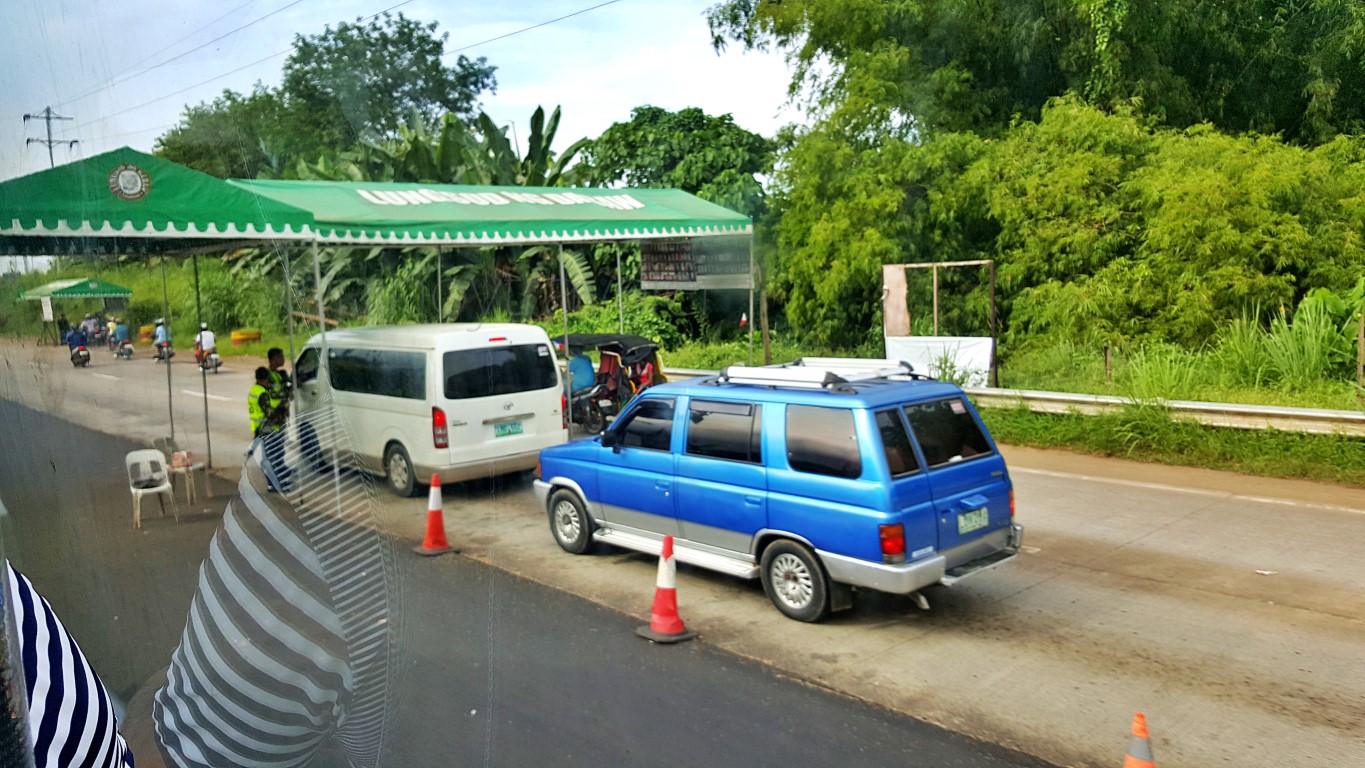




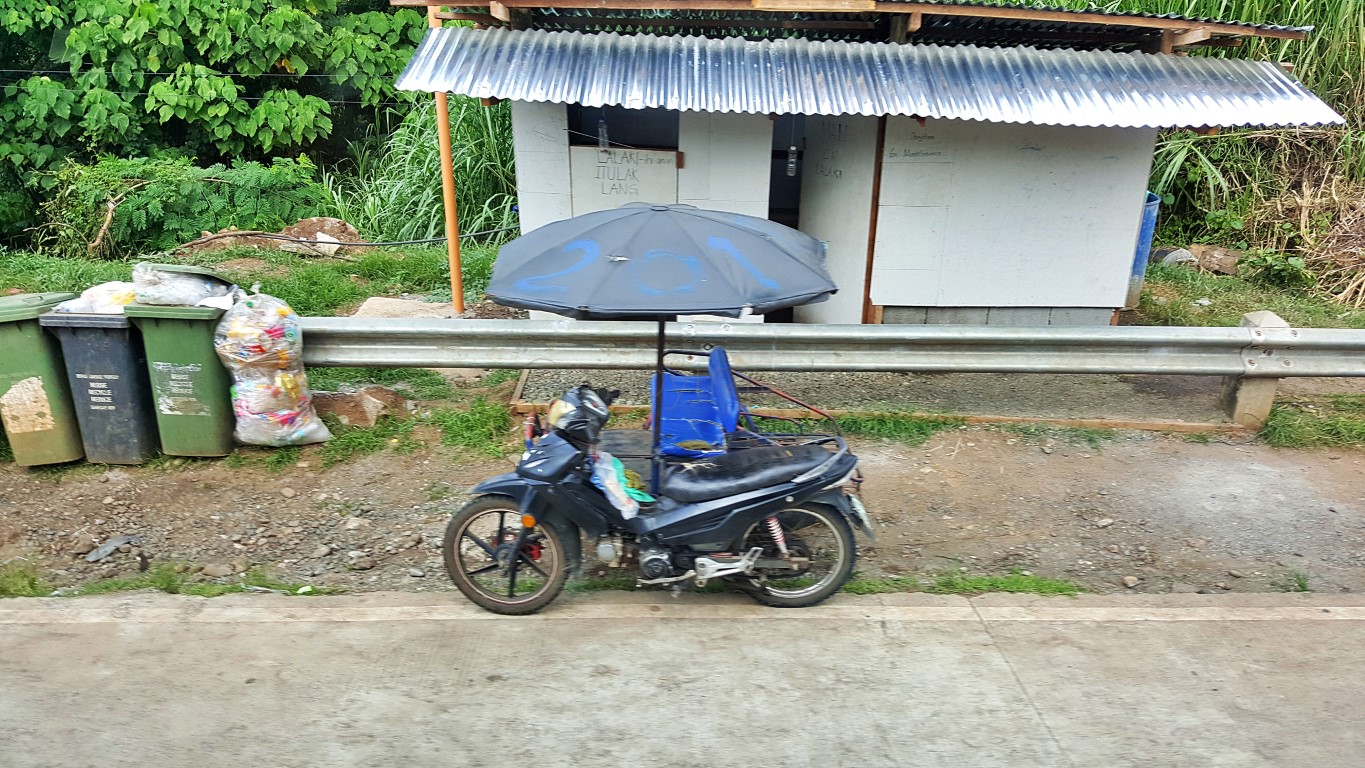
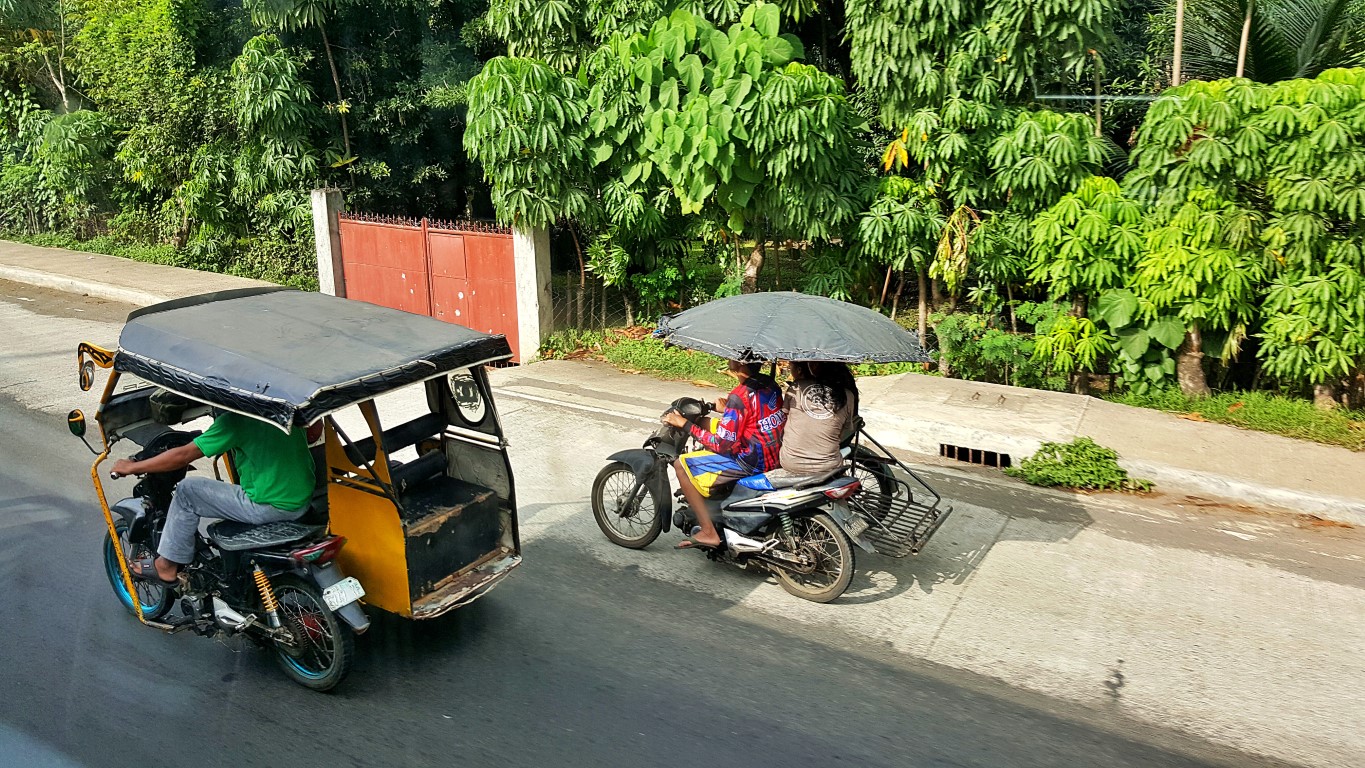

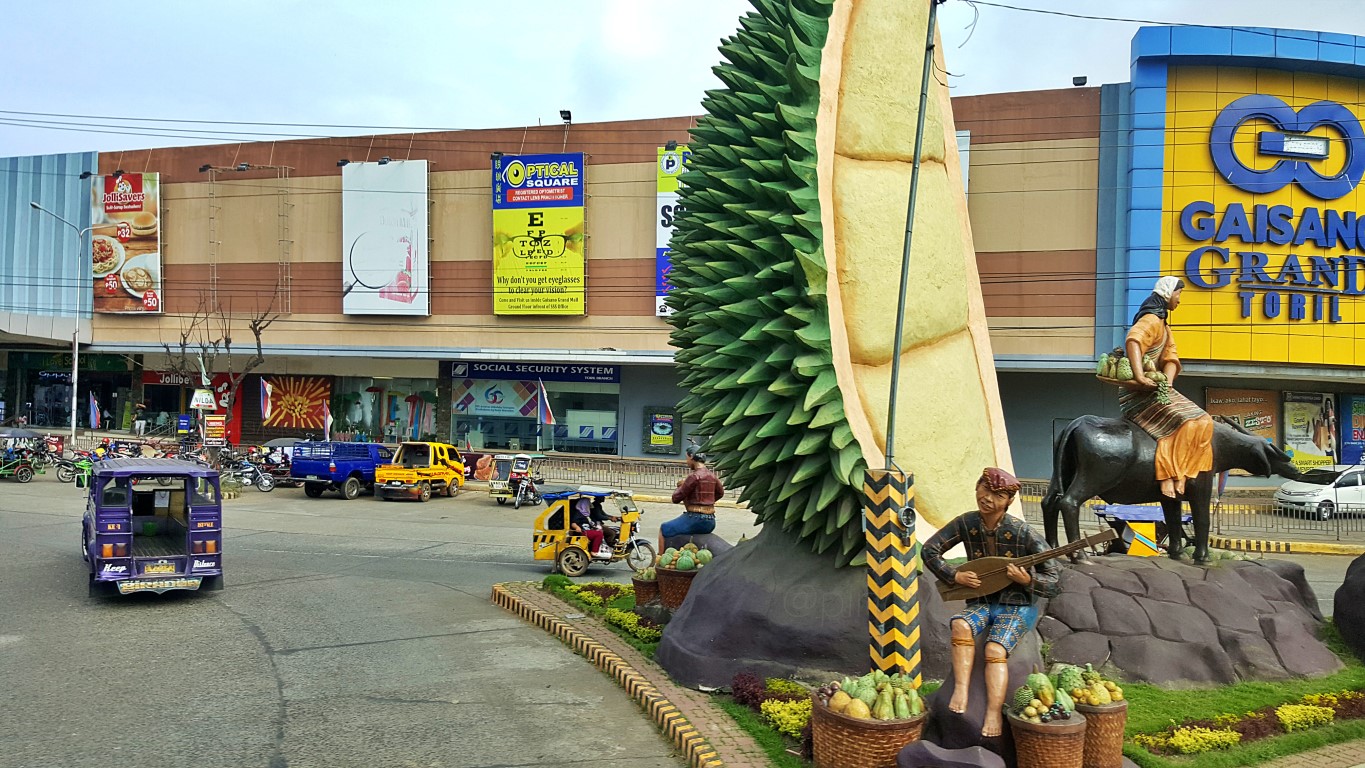





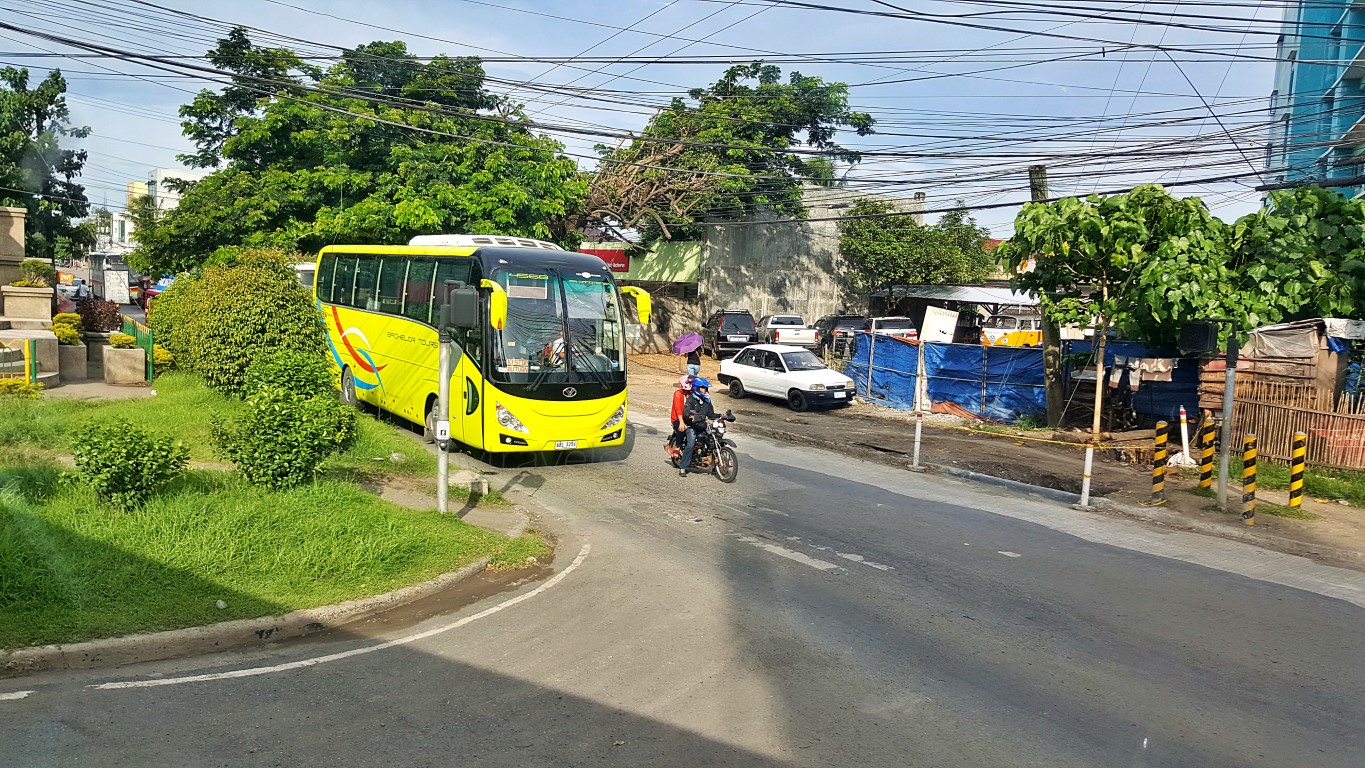




Comments
Post a Comment